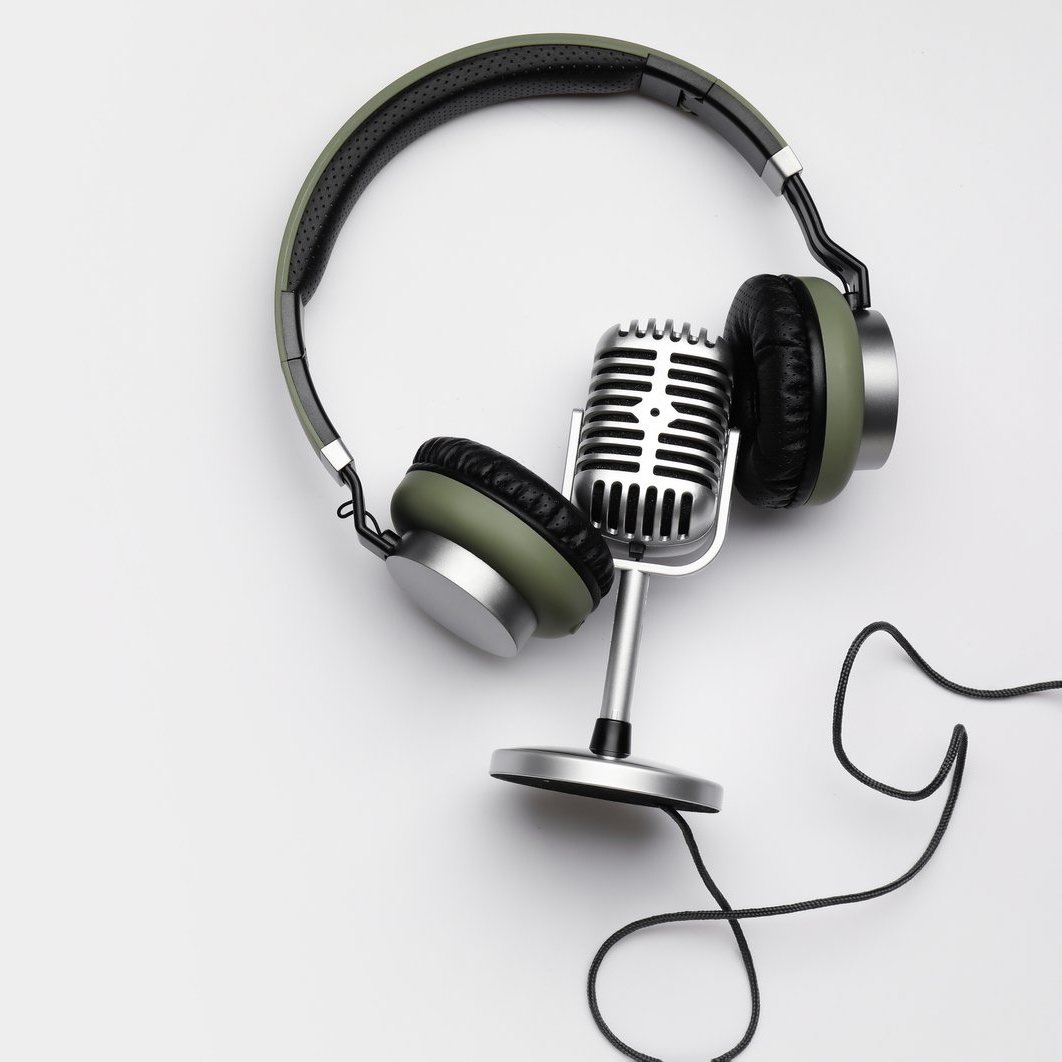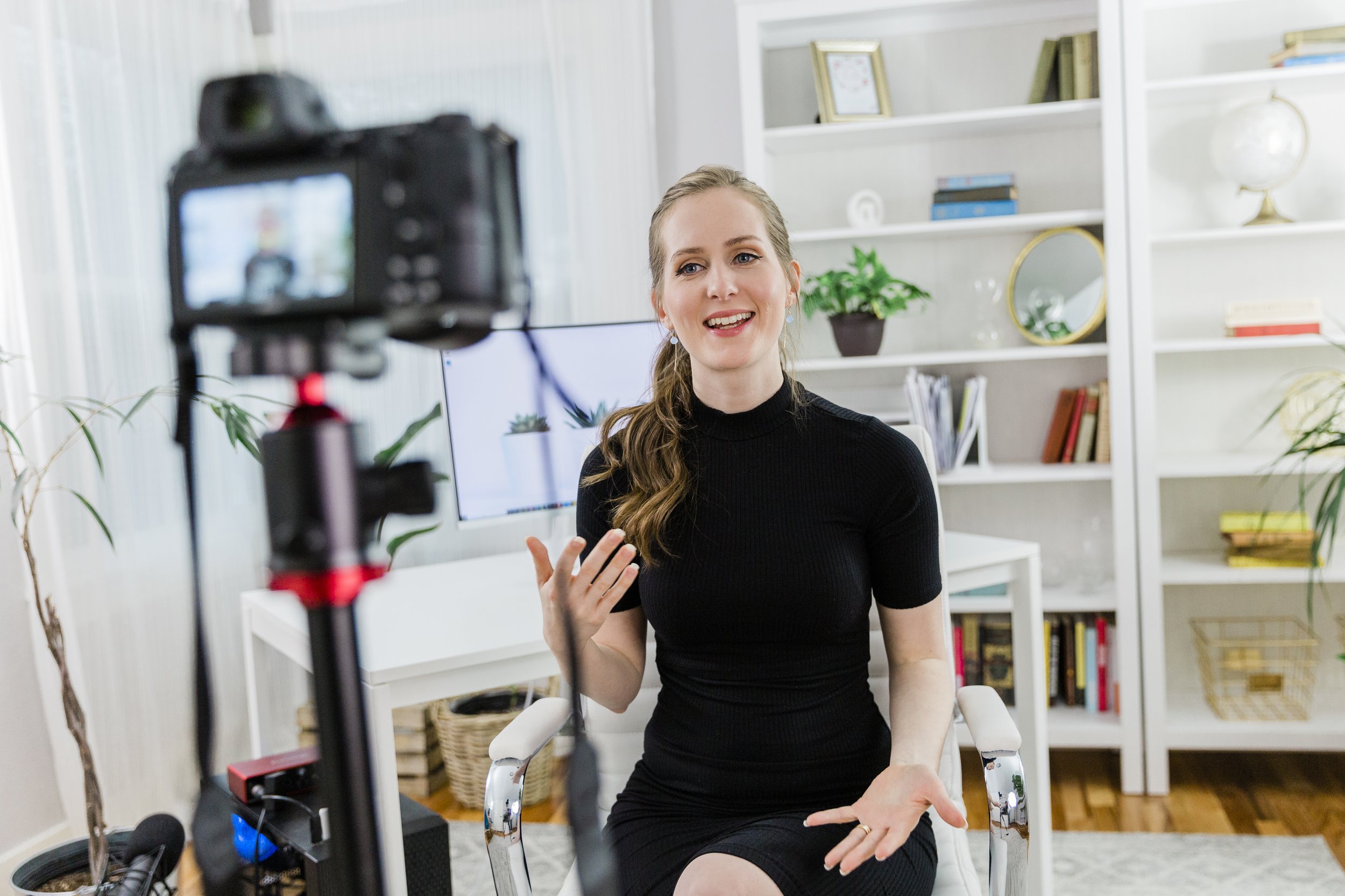Episode 71: 5 Powerful Email Campaigns Online Businesses Should Have
EPISODE 71:
5 Powerful Email Campaigns Online Businesses Should Have
A work-less, earn-more business is one that creates not only ACTIVE income, but passive income as well.
With an online business, without the demands of brick and mortar, you can set up systems to increase your income without having to increase your hours.
How?
Making more money and scaling your company largely depend on your marketing efforts. Those are the systems designed to attract leads and convert them into paying customers. Those are the systems that generate sales.
While marketing platforms and strategies are as diverse as the businesses that use them, email can be one of the most effective ways of taking people from not knowing your company to becoming full-fledged, enthusiastic customers. Using Email’s to Sell
An email sequence is a series of emails that are automatically sent to a specific segment of your email list. So if you have an email list, a group of people who you have their email address, you can send emails to them, either live. These are. Typically called broadcasts. And these emails are an email that you write and then you hit send or possibly you schedule for a future date.
And it goes at one time, an email sequence on the other hand is a series of emails that are sent automatically based on some type of trigger event. These triggers could be at some sort of action. It could be a behavior, or it could be a period of time. So let me give you some examples of what each of those types of triggers could be.
A trigger could be something like browsing behavior. So if someone goes on to a certain page of your website or when they subscribe to your list, or if they start to check out for a product and then don't finish, checking out, or if they finish checking out for a product and they actually purchased one.
On the other hand, we have these time-based triggers. And so this could be immediately after they sign up for your list or five days after they sign up or 10 days after they click a certain link. So with any of these types of triggers, what happens is when that trigger occurs, it prompts a sequence to start.
And then a series of emails is sent to the subscriber. Now, this series of emails could be two emails. It could be a hundred emails. They could be spaced one day apart, or they could be spaced 10 days apart. You could have one email sent and then 10 days later, another, and then 30 days later, another. So I'm sure that you can already see all the different possibilities there are for these sequences.
There are so many different uses for them. You can use them when someone subscribes to welcome them onto your list, you can use them to sell your products. You can use them after someone subscribes so that you can give them the product, deliver the product to your new customer and help to onboard them and help them to use it effectively.
The really cool thing about email sequences is that there's something that you can set up once and then they can continue to work for you in the future. Unlike emails that you're sending live.
A broadcast is where you write an email, you send it, it goes out to however many subscribers you have right then, or a certain segment of subscribers that you have right then. Then the next week comes around and you need to write another email, these sequences, you can set them up one time based on a trigger. And once the sequence is set up, those emails are going to continue to send on into the future indefinitely, not only the subsequent emails in the sequence.
Also as new subscribers, join your list or take actions that trigger those events that caused these emails to start to send that will cause more people to be added to your sequence and to start to get these emails. So it is a really powerful way to automate your business and these email sequences.
It can take people from not knowing about your company at all, to becoming full fledged, enthusiastic customers who love to recommend your brand. What is really cool about that is that instead of just trying to use an email sequence to sell a product, you can actually use them to really funnel people through the entire process of that customer journey.
Taking them from the very beginning, all the way to being a raving fan of your business.
5 Email Sequences You Should Know
Now that you understand what email sequences are, let's talk about these five different email sequences that every online business should have. Now, I want to say right up front that it's not that every online business must have all five of these email sequences.
These are five important functions that can all be accomplished by email sequences and using email sequences is a really powerful way to accomplish these things in your business. They're all. There are alternative ways to accomplish these things though. And so if you already have a system that is working for you, that accomplishes one of these different actions in your business, then feel free to just go ahead and keep on doing what you're doing that is working.
Welcome Email Sequence
The very first one, as you can probably guess, is a welcome sequence. So what is a welcome sequence? A welcome sequence is a series of emails that someone gets right after they subscribe to your email list for the first time.
And as the name suggests. A welcome sequence, welcomes someone to your email list, welcomes them to your community. It grates them. It introduces them to your brand and it helps to kind of initiate them and onboard them. So you have to think about the position that someone is in when they first join your email list.
Quite possibly, they don't know very much about you or about your company or why they would really be interested in what you have to offer. Maybe they've glanced around your email. Maybe they've glanced around your website a little bit. Maybe they have read a few blog posts on your site. Maybe they've scrolled your Instagram, but they don't really know the whole deal.
They have just gotten kind of this scattershot approach, read some random things. So you need to explain to them the whole. Picture now that doesn't mean that you need to tell them every detail. You just need to make sure that they have a well-rounded, uh, perspective on exactly what your business does, because otherwise they will not be interested in opening your future emails, reading them, and they won't know about your products and how they might be able to work with you.
So your welcome sequence is going to accomplish all of these things. Now, since we are talking about how email sequences can increase your income and help you to actually earn more, I want to touch on how a welcome sequence can help your business. To earn more money. There are two important ways that a welcome sequence does this.
The first one is that the welcome sequence can actually transition into a sales sequence. You can have a series of welcome emails that ends by offering a product for them to buy. And this is really effective because it means that you are selling a product early on when someone is still paying a lot of attention to your emails.
You'll see that as someone is subscribed to your email list for longer and longer, they. Gradually opened your emails less and less. And that's just because the novelty of it wears off their email inbox gets cluttered up with more and more other things that they've subscribed to more recently anyway, but that is a very, very typical.
So if you can make a sales pitch, Early on right after someone subscribes, then it is going to get seen by a lot more, a higher percentage of your new subscribers. Now, of course you don't want to pitch too early. So it's important that you do have some actual welcome emails first to start off that relationship on a good foot.
But once you've done that welcoming, it is a prime time to make an initial offer. That's the first way. The second way than an email welcome sequence can help to increase sales is because you are getting that relationship off on the right foot. That means that you're going to have a much stronger relationship with this prospect.
They're going to be much more likely to open your emails in the future, and we never, you pitched them. They will be more receptive to your offer. Now I'm not going to get into the nitty-gritty of how to build out a welcome sequence right now in today's episode but very recently in episode 67, it was entirely focused on email welcome sequences.
Automated Sales Email Sequence
An automated sales sequence is exactly what it sounds like. It is a series of emails that sells a product. Now, first things first, let's make sure that each of your automated sales sequences is focused on selling just one product. We want to keep these sales sequences as focused as possible so that we don't confuse our potential customers. Now I'm sure you can already tell what an automated sales sequence is.
It's a series of emails that guides a prospect to purchase a product. He's going to tell them about the product, about how the product can help them, the different benefits of the product, who the product is for, and who it isn't for.
In some way or other, there's going to be a limited time offer now, how can this help to increase sales? Well, it's pretty obvious, I think, but by pitching your product and by pitching it more frequently, you're going to be generating more sales. Sometimes it can be easy.
Do you wonder why nobody is buying your product and then realize that it's because you haven't been telling people that it is for sale, or you haven't been presenting them with an appealing offer. Now creating one of these automated sales sequences is a great way to make sure that your product is being pitched on a regular basis to every new person who joins your email list.
You could have this automated sales sequence triggered by the ending of your welcome sequence or you could have some other trigger where it perhaps in your weekly email newsletter, you include a link. If someone clicks on that link, perhaps to join the wait list for your product, then they get added to your automated sales sequence.
Different Types of Sales Sequences
In talking about automated sales sequences, the last thing I want to touch on is some different examples of different types of automated sales sequences, sales sequences. Just to give you some ideas of how these different sequences can work, because there are lots of different options and just understand this is not an exhaustive list.
Webinar Funnel
The first one is called a webinar funnel. You probably interacted with one of these funnels in the past. A webinar funnel is started when someone registers for a webinar or a live training or a pre-recorded training. These training videos are typically free for people to watch and they can register for them for free. They're typically going to be at a scheduled time. Although some people do them as instant access where someone can register and then watch the video training immediately. But once someone registers for this event, it is going to trigger a email sequence.
That email sequence will be a sales sequence that will be based around that webinar. So the webinar often will give kind of the big picture. It will tell people it'll teach people something important. That it relates to the product. Then it's going to talk to them about maybe some myths that they have about how to get the result that they want and then finally present the product as the solution to get the results that the prospect wants.
But here's the thing, not everyone sticks around and watches the whole webinar and even the people who do might not be ready to make a decision immediately. So by following up that webinar with a series of automated emails, you can give people a little bit more time to decide.
Flash Sale
Another type of automated sales sequence is called a flash sale. This is going to be a really short sequence. Typically all of the emails in the sequence are going to be sent over a 1-3 day period.
This is a good sequence to use. If you have people on your email list who already know about their problem. They already know about the solution and they already even know about your product. They haven't purchased it yet, but they're already interested. They're already thinking about purchasing it so you don't need to have a really long sales conversation with them.
You don't need to explain a whole lot to them, you just need to present them with an appealing offer. If that is the case, then you can create a flash sale email sequence and what this is going to do is give people this appealing offer like slashing the price or adding a bonus.
It can be an easy way to make quite a few sales automatically. The caveat there is, as I said, you have to have people who are already just about ready to buy your product. They're just waiting for the right price or for a special offer. Or for that last little push. If you try to do a flash sale with people who have no idea what your product is, your product needs a lot more explanation.
Then they're just going to turn a blind eye and ignore those sales emails and they can actually damage your relationship with your prospects. So that's why it's really important to understand who your prospects are, where they're at in their sales journey and their buyer's journey and just speak to them where they're at.
Launch Week
The third type is called launch week and this is kind of the most typical type of email sequence you see with online businesses. When you have a sales period that is one to three weeks long, it is very common and you're going to send quite a few emails over this one, two, three week period.
You will most likely be emailing about once a day. Although some people email twice a day, and this is good. If you perhaps don't want to do a webinar or a video series as we'll talk about in a moment. You just want to do email, but you need to have a long sales conversation with these prospects, stretching your sales period out for one or two or three weeks.It will give you a lot of time to slowly have that conversation and gradually work them closer to making that purchase.
Product Launch Formula Video Series
Another type of email sales sequence is called the product launch formula video series. So product launch formula is a series of video trainings, kind of like webinars only.
There's not just one of them, there are typically three or four videos in the series and you don't pitch in the first couple of videos at all. They're just training videos.These videos are typically going to be a lot shorter than a webinar. A webinar might be 60-90 minutes long, but these videos are most likely going to be between 5-30 minutes long.
I would say 15 minutes is a really common length for them. In the first few videos, you will just give value and then in the final video or two, you'll be pitching your product. So it's very similar to a webinar. It's just broken up into several shorter videos instead of one longer video. And some people find this to be more effective than a webinar, but it is more complicated to set up.
I wouldn't really recommend this, if you are new to email marketing yourself. If you would like more training on setting up email sequences, email sales sequences, especially then you can consider joining Startup Society. If you're not already a member inside Startup Society, we have training on email marketing and specifically training on email sales sequences.
We can guide you to set up your email sales sequence for your next launch, or to set up an evergreen email sales sequence so that you can be selling your products on autopilot. So you can head to startupsociety.com to learn more and to sign up for the program, if you're not already a member.Lead Return Email Sequence
Moving on to the third type of email sequence that every online business should have, this is called the lead return email sequence. Quite simply, this is going to be a very long sequence that sends an email or two every single week.
It's kind of similar to an automated email newsletter, but the express purpose of these emails is all to get people into your email sales sequence. So you'll have that automated sales sequence set up and it is based on a trigger. What is that trigger? Most likely it's when someone clicks on a link or signs up for something, but how do you get people to do that?
Well, that's where this lead return email sequence comes in every week. It sends out an email or two to your prospects and it shares with them a free offer. Something like, do you want to sign up for the wait list for this product? Or do you want to register for this webinar? Now of course it doesn't just ask that question.
There are educational emails that guide people towards wanting to take one of these free actions, but once someone takes one of those free actions, it triggers them to be added to your sales sequence. Now what's really cool about this is that it means that you're constantly going to be getting your leads to come back into your sales sequence.
Let me walk you through a little scenario of what would happen if you don't have the lead return email sequence, someone signs up for your email newsletter, they get your welcome emails and they're pretty interested in your brand. Then they get a series of sales emails. This is your automated sales sequence.
Now they're interested in your product, but they're not quite ready to buy it yet. Maybe they don't have the cash on hand right now… maybe the timing just isn't right, because they're busy with other things right now, and they don't want to buy this new product that they're not going to have time to use yet.
So they don't buy. Now, what you could do is then have another automated email sales sequence and another automated sales sequence and another and another and another, but you will be guessing as to the timing and it might be that the timing is wrong over and over again. On the other hand, if you have this automated sales sequence that is based on a trigger where only when someone signs up for a wait list or signs up for a webinar, do they get added to that sales sequence?
It is going to be much more likely that you can get the timing right and pitch to people when they are actually interested in buying your product, not just after they've signed up for your email list in the first place. So that's where this lead return email sequence really comes in handy because it's going to automate the process of getting people into your email sales sequence.
Long-term setting up that lead returned email sequence is going to enable you to simplify your business. Work less, automate your sales, and make more money. So it's a great move, but shorter term, it is a lot of work to set that up.
You might want to stick to weekly broadcasts for now later on, you might be able to repurpose a lot of those weekly broadcasts into emails inside of your email in your lead return email sequence.
Abandoned Cart Email Sequence
Next up is the abandoned cart sequence. What is an abandoned cart sequence and abandoned cart sequence is a series of emails that get sent to someone if they start to check out, but they don't finish checking out.
Maybe they click on your product… maybe they add it to their cart and then for some reason they never buy it. Now maybe they change their mind, but maybe they just got distracted by their child calling to them from the other room and they had to go get their child to drink of water and then they completely forgot that they were trying to buy this thing because their life is busy and they got distracted.
It is very helpful to set up what's called an abandoned cart sequence to remind people about that thing that they were thinking about buying the abandoned cart sequence can be as short as just one email, or it can be several emails long now in order to be able to trigger the abandoned cart sequence, you do have to have the person's email in the first place.
You're going to have to either have someone create an account first or have your checkout process set up so that the first step is to enter their email and their name. Then the next step is to actually complete their purchase or you will have to have this person already on your email list because they've signed up in the past. When they visit that page of your site or when they take that action, that is the trigger event. So this is a little bit more complicated to set up.
However, if you are using some sort of shopping cart software, then they might have this already set up for you to make it pretty easy. Now it's pretty easy to see how this can help to increase sales. You're going to recapture some of those prospects that were so close to making that purchase, but then just didn't quite follow through.
We typically are going to see, you know, somewhere between a 10 and a 50% success rate on these emails where 10 to 50% of people end up actually going ahead and purchasing the product. It's something that can be a little bit of a hassle to set up at first, but once you have it set up, it is going to run completely on autopilot and you won't need to touch it potentially for years, unless you change your sales process.
Re-engagement Email Sequence
Finally number five, this is the re-engagement sequence or re-engagement sequence is sometimes also known as a list, cleaning a sequence. So this is a series of emails that are sent to people who have been inactive on your email list for a period of time, typically about three months or so.
You are thinking about cleaning them off your list because they're just dead weight. They are damaging your deliverability and your open rates, and you want to keep your list nice and clean and healthy. So you want to get rid of that dead weight but before you do what you should do is send those leads through this re-engagement sequence.
The re-engagement sequence is a series of emails that have subject lines that tell people that they are about to get deleted and that if they want to stay on the list, they need to open the email and click a link. So the subject line might be something like, “Oh no. Is it time for you to go?” Or “do you still like me?”
There are lots of different options for this. It definitely doesn't need to be complicated. I would highly recommend doing it because first of all, I highly recommend cleaning your list periodically. I clean my list every three months because I find it really helps to keep my list healthy. Keep those engagement rates high, keep the open rights high.
It also helps to keep my email marketing software bill down because email marketing software can get really expensive as your list gets really big. If I didn't clean my list, I think I would have between 300,000 and 500,000 email subscribers that have signed up for my email list. We've cleaned out more than half of the people who over time just stopped opening my emails and that's completely fine. You know, we're all constantly discovering new people online, subscribing to new email newsletter things in our life, and changing our interests.
I don't really want to continue to bother people with my emails if they have no interest in opening them. My email list cleaning sequence works if someone has not opened an email for at least 60 days, But they've been subscribed for more than 30 days.
Then we are going to remove them from the list. But before we do that, we send them this series of emails that prompts them to open an email and to re-engage. And if they do that, then they don't get removed from the list. So let's talk about two more things related to this one is how does this help to increase sales?
Well, it helps to increase sales because it helps to re-engage cold subscribers, people who haven't been opening your emails for a while, might get prompted to open your emails and then start actually reading them after that, because they got this little wake up call that they're going to get deleted if they do not.
The final thing I want to touch on about this is how can you set this up without you having to do much work on your own. So they might have already written the emails for you already set them up in a sequence and all you need to do is turn the sequence on and push your cold subscribers through it.
That is how ConvertKit has the setup. ConvertKit is the email marketing system that I use and love and recommend, they make it super easy. If you're interested in finding out more about ConvertKit, you can click here to sign up!
That’s all I have for you today, talk to you again soon!
JOIN 250+ ENTERPRENEURS IN $100K MASTERMIND!
Show notes + links:
LISTEN TO THE FULL EPISODE TO HEAR:
The five functions an automated email sequence can accomplish for your business
Using sequence triggers effectively to reach leads at different points in the sales process
Why you should clean your list, when to do it, and how to use tidying up to re-engage subscribers
Why you should keep segments simple, if you use them at all











